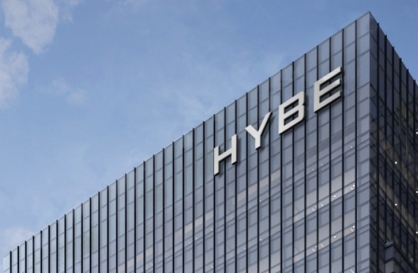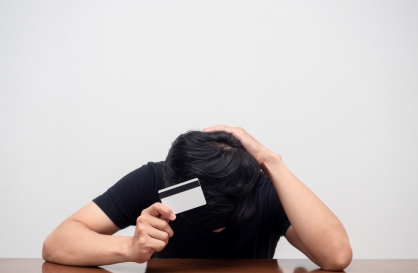
Thermal cameras, transparent dividers in cafeterias, masks and disinfectants in classrooms: These are some of the changes Korean students are to face in the era of COVID-19 as they return to schools from May 13.
With a marked slowdown in new infections and the easing of social distancing nationwide, students will go back to school in phases after 72 days, starting with high school seniors. The spring semester already began in April, though entirely with online classes.
“Schools cannot go back to the times before the COVID-19 outbreak and all of us should prepare for a new way of running schools,” said Education Minister Yoo Eun-hae on Monday, announcing the schools’ phased reopenings from May 13 through June 1.
To minimize the risk of infections at school, physical distancing among students and maintaining personal hygiene are of the highest priority.
All students are to be surveyed on their health -- whether they have a fever, respiratory symptoms and so on -- before attending school.
At school, students get fever checks upon arrival at the school entrance and before lunch. Those who have fevers higher than 37.5 degrees Celsius or respiratory symptoms are first separated and then tested for the virus at nearby clinics.
Once students arrive in classrooms, they must wipe down their desks. Everyone at the schools should keep masks on except during meals. Hand sanitizers, thermometers and face masks are stocked in every classroom.

Class sizes will be smaller, with all students sitting alone and each desk placed some 2 meters apart from others. Each class will take breaks at different times to minimize physical contact among students. Activities involving a group of students and moving between classes are discouraged.
At cafeterias, students get lunch at different times. They line up 1 meter apart from each other to be served. Partitions are installed on tables and students all sit in rows or a zigzag pattern so they don’t face each other. The cafeteria is disinfected after students finish the meal.
It takes only one confirmed patient for a whole school to close down again. When one person becomes infected with the virus, the school is closed and turns again to online learning. Everyone at the school should self-quarantine for two weeks. Health authorities also would conduct an epidemiological investigation into the school.
The authorities are in discussion on whether air conditioners and air purifiers can be used in classrooms. Under the instructions for school reopenings released earlier, using air conditioners was not recommended, and opening windows for ventilation was advised.
Nearly 100 percent of schools have finished putting into place quarantine measures - such as disinfecting classrooms, rearranging desks and installing thermal cameras -- to welcome back students, according to the Education Ministry.
“Things have massively changed, with classrooms equipped with masks and sanitizing tissues. Thermal cameras are installed and desks are rearranged to keep enough space from others,” said Jeong Hanna, who teaches second-year students at middle school.
After high school seniors return to school first to prepare for the annual college entrance exam, students in the second year of high school, third year of middle school and first two years of elementary school will go back to school on May 20. On May 27, in-person classes will resume for students in their first year at high school and second year at middle school and in the third and fourth years at elementary school. Schools will reopen for the rest on June 1. Kindergartens will open on May 20.
The reopenings come amid lingering concerns over whether it is safe for children to go back to school.
Given a more expansive web of contacts made at school, there are concerns that classrooms could become breeding grounds for a new wave of novel coronavirus infections.
Jeong Eun-kyeong, director general of the Korea Centers for Disease Control and Prevention, warned that there is still a possibility of infections in reopened schools, though it is “not high.”
Also, experts have suggested at least two weeks should pass to have students back at school following the long holiday that stretched from Buddha’s Birthday on April 30 to Children’s Day on Tuesday. Given the two-week incubation period of the virus, infections linked to the increased movement of people and physical contact during the holiday could be seen within five to six days.
The COVID-19 risk that children are exposed to and pose to the community – from whether children are less likely to catch the coronavirus to how easily they can transmit the virus to others – is still not known.
A petition opposing children returning to school was uploaded on the presidential office’s website Tuesday, with the petitioner asking the government to allow parents to decide whether to send them back to school. It had gathered more than 15,000 signatures as of 5 p.m. Tuesday.
The reopening of schools should not be viewed as the end of the outbreak, Education Minister Yoo said, urging teachers, parents and students to remain vigilant.
“In order to return to free and lively classrooms that we used to have before the coronavirus outbreak, we should keep quarantine measures at school and at home with drastic preventative measures for a while,” she said.
By Ock Hyun-ju (laeticia.ock@heraldcorp.com)
-
Articles by Ock Hyun-ju




![[Herald Interview] 'Amid aging population, Korea to invite more young professionals from overseas'](http://res.heraldm.com/phpwas/restmb_idxmake.php?idx=644&simg=/content/image/2024/04/24/20240424050844_0.jpg&u=20240424200058)













![[KH Explains] Korean shipbuilding stocks rally: Real growth or bubble?](http://res.heraldm.com/phpwas/restmb_idxmake.php?idx=652&simg=/content/image/2024/04/25/20240425050656_0.jpg&u=)

